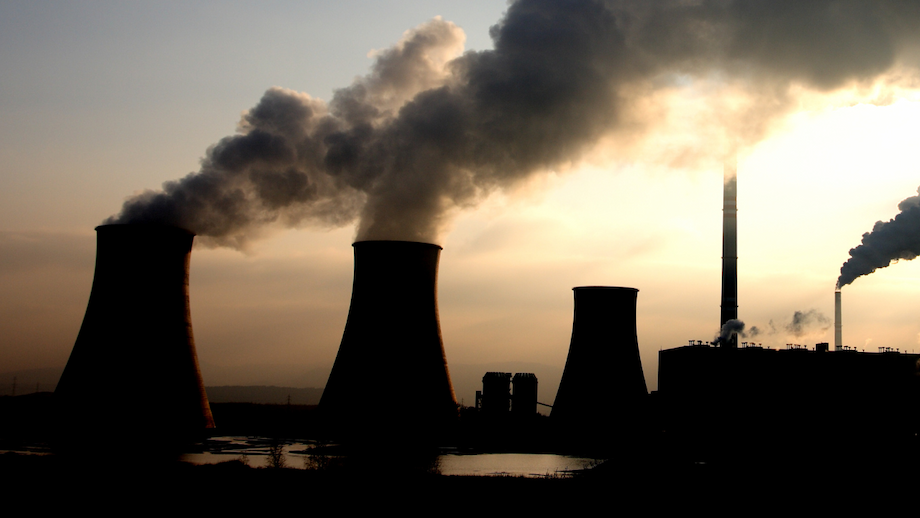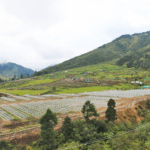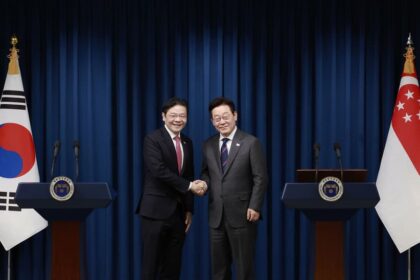A national study with high stakes
The Philippine government is weighing a nationwide shutdown of coal mines, and potentially some coal plants, in a bid to speed the country’s shift to cleaner power. The Department of Energy is partnering with the United Nations Office for Project Services to conduct a full impact study on what closing coal sites would mean for workers, host communities, electricity prices, and energy security. Officials stress this is exploratory, not a policy decision, but the scope is sweeping and the stakes are high in a country where coal currently dominates the power mix.
- A national study with high stakes
- What exactly is under review
- How would a shutdown affect power bills and reliability
- The finance problem and new tools to solve it
- Targets, policy moves, and grid readiness
- Mining shutdown versus power plant exit
- What a just transition will require
- Regional momentum and guardrails
- The Bottom Line
Coal fuels 62.5 percent of Philippine electricity generation, while renewable energy contributes 22.2 percent. The government targets 35 percent renewable power in the mix by 2030, with deeper gains by 2040. A moratorium on new coal projects, announced in 2020, already blocks future greenfield plants, though existing and committed units can still operate. The current study would go further by mapping how to wind down today’s coal assets without destabilizing the grid or undermining livelihoods in coal communities.
Michael Sinocruz, the Department of Energy’s director for energy policy and planning, said the study will quantify potential job losses, economic ripple effects in host communities, and the funding needed to cushion any shock for families and local businesses. He said the department would engage coal companies once the study is complete and could recommend policy options to the national government based on the findings. Industry players are urging caution. Semirara Mining and Power Corporation, the country’s largest coal producer, said it supports a clean energy transition but argued that coal remains essential for reliable and affordable baseload supply. Economist Michael Ricafort warned of higher electricity prices and job losses if closures are abrupt, although he also said the move could accelerate investment in solar, wind, hydro, and geothermal projects.
What exactly is under review
According to Department of Energy officials, the assessment will examine all coal mines and all coal fired power plants in the Philippines. The central questions are straightforward. How would closures affect the cost and reliability of electricity. What happens to miners, plant operators, and supporting businesses. How much money is required to fund retraining, new livelihoods, and social services in host communities. Which alternatives can be delivered quickly to keep the lights on at reasonable prices.
How the study will be used
Department of Energy leaders say they will consult with operators and mining companies once the analysis is finished. The goal is to identify realistic alternatives and a timeline that protects both energy security and jobs. The study could inform new policies, incentives, and technical standards. Officials have indicated the formal work could begin next year, following internal approvals with the United Nations partner.
Jobs and community impact
The just transition is a core focus. That means identifying funding and programs for displaced workers, including severance, retraining, and pathways into new jobs in renewables, construction, grid operations, and other sectors. It also means safeguarding incomes in host communities that depend on mining or plant activity through local enterprise support and infrastructure spending. Department of Energy officials say the study will estimate these costs and propose options to finance them through a mix of public funds, private investment, and emerging climate finance tools.
How would a shutdown affect power bills and reliability
Coal plants supply round the clock baseload power. Replacing that with new generation and storage needs careful sequencing to avoid shortages and price spikes. Economists who back a rapid transition still caution against abrupt shutdowns without replacements built and tested. Bienvenido Oplas Jr., a market analyst, warned that winding down coal assets too quickly could lift inflation and make power less reliable if replacement capacity is not ready. He and others argue that a measured timeline, aligned with new renewable and storage projects, is vital for grid stability.
Energy Undersecretary Rowena Cristina Guevara has been outspoken on standards and retirement pathways for coal plants. She said the department wants stricter performance rules, a policy for voluntary retirements, and a focus on the dirtiest, least efficient units first. She also pointed to the country’s reliability challenge, citing many outages that strain households and industry. After she outlined the approach, she framed the goal plainly.
“Voluntary retirement and repurposing (of coal plants) is part of our energy transition,” Guevara said.
Another factor is the difference between domestic coal mining and coal use in power generation. Analysts note that most coal burned by Philippine power plants is imported, primarily from Indonesia, while much locally mined coal goes to cement production or is exported. An analysis in The Manila Times, citing government data, said domestic coal accounted for only about 10.5 percent of annual coal consumption in recent years, with 16.772 million metric tons produced in 2024 and 8.402 million tons exported. That means closing mines and closing power plants are related but distinct policy choices. Policymakers must consider how a mining shutdown would affect non power industries, exports, and jobs, while power reliability hinges more on the pace at which imported coal plants can be retired and replaced with clean capacity and storage.
The finance problem and new tools to solve it
Early closure of coal plants is expensive. Investors built many Philippine and Southeast Asian coal units in the past decade with financial models that assumed decades of operation. Asking owners to close early requires paying down debt, covering stranded assets, and funding new clean generation, transmission lines, and storage. A growing set of tools is emerging to bridge that gap.
The Asian Development Bank is advising the Philippine government on coal retirement under its Energy Transition Mechanism. The mechanism is designed to buy down and refinance coal assets, shortening their life while mobilizing capital for renewables. In parallel, a new class of carbon finance known as transition credits is taking shape. These credits pay plant owners to retire units earlier than planned. The emission reductions are verified and monetized, and a portion of the proceeds supports workers and clean energy replacements. The registry Verra has launched a methodology for crediting early coal retirements that are paired with new clean power. Supporters say this could unlock projects that would otherwise not move forward.
That pipeline is starting to form in the Philippines. ACEN, a major Philippine power company, completed the world’s first market based Energy Transition Mechanism deal to speed the retirement of its South Luzon Thermal Energy Corporation plant. The company is now seeking to sell transition credits to bring the closure forward from 2040 to 2030, while protecting roughly 200 plant workers and financing replacement generation. ACEN says it needs a bilateral agreement under Article 6 of the Paris Agreement between the Philippines and Singapore, plus sufficient buyer demand at a viable price, to lock in the credits.
Singapore’s financial authorities and corporate partners are also backing transition credits. The Monetary Authority of Singapore convened a coalition to scale these credits, and a project backed by Keppel, GenZero, and Mitsubishi aims to retire a 246 megawatt coal plant in Batangas by 2030 and replace it with renewable energy and battery storage. The partners estimate the cost at more than 1 billion United States dollars and project up to 19 million tons of avoided carbon dioxide emissions. A number of global brands, including Amazon, Meta, Netflix, Mastercard, and PepsiCo, have joined a broader Kinetic Coalition that seeks to channel billions of dollars into clean energy in emerging economies by paying to end coal generation early.
Joseph Curtin, managing director for power and climate at The Rockefeller Foundation, which helped develop the Verra methodology, said the new approach can speed real world results.
“We are closer than ever to unlocking new benefits to people with credits that will help communities transition to clean, affordable energy,” Curtin said.
Verra’s chief executive, Mandy Rambharos, has argued that credible rules can align early closures with community protections. The new methodology requires a plan for a just transition and pairing retired coal capacity with renewable replacement. Critics, however, warn that the market is young and must guard against weak baselines or projects that claim too much credit for emission reductions.
“The methodology empowers energy providers to make that shift in a way that does not leave workers or communities behind and does not inadvertently exacerbate energy poverty,” Rambharos said.
Targets, policy moves, and grid readiness
Government targets call for renewables to supply 35 percent of the power mix by 2030 and 50 percent by 2040, with coal’s share falling toward one fifth by 2040. Hitting those targets requires faster permitting, expanded transmission, and large scale storage so the grid can absorb more variable solar and wind output. The Department of Energy has discussed pursuing stricter performance standards for coal and setting up a policy framework for voluntary retirements, focusing first on inefficient or unreliable units. Officials also emphasize that reliability must improve. Rappler reported that more than 53,000 outages were recorded in 2023, a reminder that keeping the system stable is central to any transition plan.
Expanding renewable energy at pace will require more than generation. The archipelago’s geography makes transmission projects complex. Energy storage can help balance demand and supply, and flexible demand programs can reduce strain on the grid. Policymakers will also need to ensure that households and businesses can manage costs during the build out, especially as more than two million Philippine households still lacked electricity access in 2023. That makes affordability and access part of the transition test, not an afterthought.
Mining shutdown versus power plant exit
Debate over a nationwide mining shutdown often blurs two distinct issues. Coal mining sustains jobs and local revenues, with Semirara Island in Antique province being the sector’s hub. Power generation, by contrast, relies mostly on imported coal. If mines close, cement makers and exporters could face immediate impacts. If plants close, the grid must be ready with clean replacements. Policymakers may pursue different timelines and tools for each, while keeping workers and host communities at the center of planning.
Some analysts suggest shifting the remaining domestic coal toward newer, cleaner burning plants as an interim step to reduce import dependence and exposure to price shocks from export curbs abroad. Others argue that investments should flow directly into renewables, storage, and grid upgrades to speed the end of coal power. The Department of Energy’s study is expected to present options and trade offs, including employment programs and local development funds that can ease a managed exit.
What a just transition will require
A credible transition plan needs to protect people and keep power reliable. The Department of Energy’s work with the United Nations partner signals a focus on social protections alongside technical planning. Several building blocks are already visible in local pilot projects and international programs.
- Worker protection. Severance, retraining, job placement services, and pension support for miners and plant staff.
- Community investment. Funds for small business development, education, health services, and infrastructure in host municipalities.
- Clean replacement power. Sequenced build out of renewables, transmission, and storage so that closures happen only when adequate capacity is online.
- Finance. Use of Energy Transition Mechanism tools, transition credits, loans, and grants to close the economic gap for early retirements.
- Standards and governance. Clear rules to prioritize the worst polluting plants, verify emission reductions, and prevent cost pass throughs that punish consumers.
New carbon credit methods require safeguards, including pairing closures with new renewable capacity and submitting a just transition plan. Some experts, such as policy advisors at E3G and analysts at Ember, caution that methodologies must avoid weak assumptions about what would have happened anyway and should be careful about allowing biomass as a replacement fuel. The market is evolving, and the Department of Energy will need to weigh these integrity concerns as it considers how to use credits, public financing, and private capital to fund projects.
Regional momentum and guardrails
Across Asia, governments and lenders are testing models to retire young coal fleets without straining public budgets. Singapore is positioning itself as a hub for transition credits and green finance. The Asian Development Bank’s Energy Transition Mechanism is advising on coal retirement deals across Southeast Asia. Corporate buyers are pooling demand through alliances, with transition credits seen as a way to deliver measurable emission cuts in emerging markets.
Progress is not linear. Some global programs to fund just energy transitions have faced delays and shifting political support. That makes national planning more important. Philippine officials say they will proceed based on evidence from the study, with energy security and livelihoods as central constraints. If the pilots in Batangas and at ACEN’s South Luzon plant deliver clean replacements and protect workers, they could become templates for larger deals. If they stumble, policymakers will likely adjust the playbook before moving to nationwide action.
The Bottom Line
- The Department of Energy is studying a nationwide coal mining and plant shutdown with the United Nations Office for Project Services, focusing on jobs, communities, prices, and grid stability.
- Coal supplies 62.5 percent of Philippine power, while renewables are at 22.2 percent. The goal is 35 percent renewables by 2030.
- Officials plan to consult companies after the study and could recommend policy options to the national government.
- Industry warns that abrupt closures could raise prices and risk reliability, although faster investment in solar, wind, hydro, and geothermal could follow.
- Most coal burned in power plants is imported. Closing mines and closing plants require different timelines and tools.
- New finance tools are emerging. Verra approved a method for transition credits, and ACEN and partners are advancing early retirement pilots in the Philippines.
- A project backed by Keppel, GenZero, and Mitsubishi aims to retire a 246 megawatt plant in Batangas by 2030 and replace it with renewables and storage.
- Stricter standards for coal plant performance and a voluntary retirement policy are being developed, targeting the dirtiest units first.
- Worker protection, community investment, and clean replacement power are essential elements of a just transition.
- The government’s decisions will hinge on the study’s findings, with energy security and livelihoods as the key tests of any coal phaseout plan.












